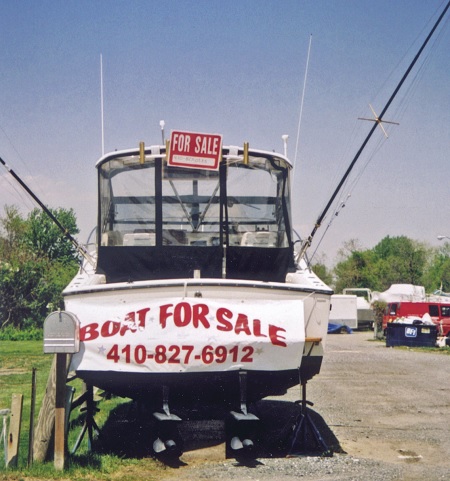 With interest rates already on the rise, how can you ensure your boat loan goes smoothly without time-consuming hiccups? Here are 10 tips from Boat Owners Association of The United States (BoatUS) just in time for the spring buying season.
With interest rates already on the rise, how can you ensure your boat loan goes smoothly without time-consuming hiccups? Here are 10 tips from Boat Owners Association of The United States (BoatUS) just in time for the spring buying season.
1. Check your credit. Before applying for a loan get your current credit score and ensure your credit report is accurate. Scores above 800 may earn you a better interest rate. A free copy of your credit report is available annually from each of the three national credit bureaus at www.AnnualCreditReport.com. You can also check with your credit card issuer or bank you do business with. Other options are a credit counselor, a fee-based service, or to purchase it from the credit bureau. Find more at the Consumer Financial Protection Bureau.
2. Find the right loan type. A fixed-rate, fixed-term, simple-interest loan is the most common. This offers the same monthly payment for the life of the loan. Variable rate or hybrid options may offer a combination of a fixed rate for a few years, and then a variable rate. With interest rates forecasted to continue to rise in 2018, the appeal of variable rate loans may decrease. Don’t forget to ask if there are prepayment penalties for paying off the loan early.
3. Consider a HELOC. Buyers of smaller vessels often tap into their home equity line of credit (HELOC) to fund a boat purchase. That may work well if you plan to pay the boat off while interest rates remain relatively low. However, passage of the Tax Cut and Jobs Act of 2017 eliminated the deductibility on interest for a home equity loan (if the qualifying vessel has a sleeping berth, cooking and toilet facilities).
4. Compare loan rates. Generally rates are lower and available loan terms are longer for newer boats and larger loan amounts. However, each is dependent on a variety of factors including model year, loan amount and down payment. Be prepared for banks to require larger down payments, have higher rates and offer shorter terms on older boats, especially those more than 20 model years. There could also be a significant rate difference between some consecutive model years, so be sure to talk with your lender and understand their rate and term structure.
5. Don’t be fooled by ads. You may see rates advertised as low as 3.99 percent, but there usually will be some small print that could make that loan less attractive. For instance, the rate might only be fixed for a few years or the loan period might be only seven years.
6. Get pre-approved. To help save time, ask if you can get preapproval, or if you can possibly start the underwriting process before you have a signed sales agreement or even have a specific boat in mind.
7. Know your tax benefits. A boat can qualify as a second-home loan interest deduction if it has a berth, galley and head, so buying a boat with these features may offer a tax advantage. However, the new Tax Cut and Jobs Act of 2017 reduces the previous $1 million second-home mortgage deduction limit to $750,000 and completely eliminates deductibility of interest for a home equity loan that’s often favored by small boat buyers to fund a purchase.
8. Get it surveyed. For pre-owned vessels, hire a qualified marine surveyor to inspect the boat to ensure it is in good condition and you won’t have any unexpected repair bills. BoatUS.com/Surveyors can help you find one. Also, many lenders will require a marine survey.
9. Ask about closing costs. As with any loan, there are some fees involved. Sales tax, processing fees, title and registration and/or US Coast Guard documentation fees are common. Check with your lender to find out what to expect.
10. Calculate your monthly payment. How much can you afford? Go to BoatUS.com/Calculator to easily crunch the numbers. Your lender will also review your debt ratio and other criteria.
To learn about boat loans from BoatUS, go to http://www.BoatUS.com/Boatloans.
